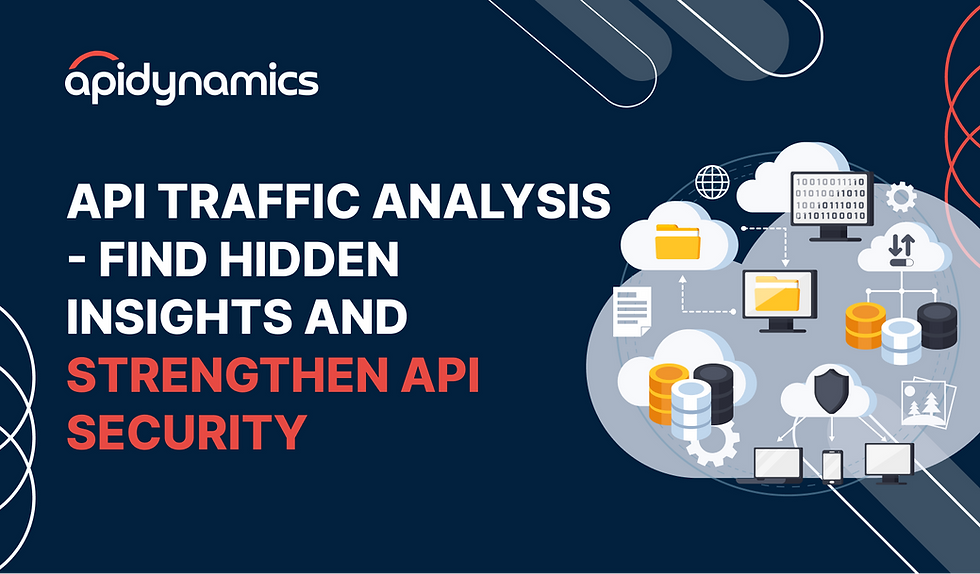Applying Zero Trust Principles to API Security with APIDynamics
- APIDynamics
- Mar 17
- 4 min read

What is Zero Trust API Security?
Zero Trust API Security is the application of Zero Trust principles to API security, ensuring that every API request undergoes continuous authentication, authorization, and validation—regardless of its source.
In traditional security models, trusted entities inside a network are assumed to be safe. However, this assumption no longer holds in today’s cloud-first, API-driven world. APIs operate in distributed, multi-cloud environments, making them prime targets for attackers.
Zero Trust API Security means verifying every request, every time—without exceptions.
🔹 No implicit trust – Every API request is treated as untrusted until fully verified.
🔹 Continuous authentication – API calls require proof of identity beyond just an initial login.
🔹 Granular authorization – Every request must be explicitly authorized based on its context.
🔹 Least privilege enforcement – APIs only get access to what they strictly need.
🔹 Real-time threat detection – Suspicious API activity triggers automated security actions.
🚀 With APIDynamics, you can enforce Zero Trust API Security at every layer—ensuring continuous authentication, dynamic access control, and AI-driven anomaly detection.
🔹 How to Apply Zero Trust Principles to API Security
1️⃣ Enforce Continuous Authentication
Traditional API authentication is flawed. Many APIs rely on long-lived tokens, API keys, or OAuth credentials that remain valid for extended periods—even if the user’s session has changed or been compromised.
🔹 How APIDynamics Solves This:
✅ Every API request must prove its identity in real time—no long-term trust assumptions.
✅ AI-driven authentication decisions adapt to risk levels dynamically.
✅ Token validation & session re-authentication occur continuously, not just at login.
✅ TOTP & step-up authentication are triggered only when risk is detected.
Example:If a valid token is being used from an unfamiliar IP or unusual device, APIDynamics challenges the request with additional authentication before allowing access.
2️⃣ Implement Granular Authorization & Least Privilege Access
Just because an API request is authenticated doesn’t mean it should have full access. Without proper role-based access control (RBAC) and attribute-based access control (ABAC), an attacker who gains valid API credentials can move laterally within your system and extract sensitive data.
🔹 How APIDynamics Solves This:
✅ Enforces RBAC & ABAC – Limits API access based on user roles, attributes, and risk level.
✅ Per-request authorization – Every API call must revalidate permissions in real time.
✅ Context-aware policies – An API call’s location, device, and behavior affect what it can access.
Example:A marketing analytics API can read customer data but cannot modify or delete records. If an unauthorized API request attempts data modification, APIDynamics blocks it automatically.
3️⃣ Implement Mutual Authentication for Service-to-Service APIs
Just because two services belong to the same company doesn’t mean they should automatically trust each other. API security must verify both the requesting service and the target service before allowing communication.
🔹 How APIDynamics Solves This:
✅ Dynamic API access tokens – Ensures that even internal APIs must prove their identity for every request.
✅ Strict inter-service authorization – Even services inside the same environment don’t get automatic access.
Example:Service A wants to request data from Service B. Instead of blindly trusting Service A, Service B requires adaptive authentication and an API access token issued for that specific session.
4️⃣ Monitor & Detect Anomalies in API Behavior
Zero Trust doesn’t stop at authentication and authorization—it requires continuous monitoring of API activity to detect unusual patterns, automated attacks, and insider threats.
🔹 How APIDynamics Solves This:
✅ AI-powered anomaly detection – Monitors API traffic for unusual patterns, such as excessive login attempts or high API call volume.✅
Rate limiting & throttling – Prevents denial-of-service (DoS) attacks and API abuse.✅ Behavioral risk analysis – Compares current API behavior to historical patterns.
Example:If an API normally receives 10 requests per minute but suddenly spikes to 100 requests per second, APIDynamics detects this as an anomaly, flags the traffic, and throttles or blocks excessive requests automatically.ypted at rest in the database.
5️⃣ Implement API Logging & Auditing for Complete Visibility
Zero Trust API Security requires full visibility into every API transaction to trace security incidents, monitor API usage, and detect breaches.
🔹 How APIDynamics Solves This:
✅ Logs every API authentication & authorization event.
✅ Tracks API access across different services & users.
✅ Provides real-time alerts for suspicious API activity.
Example:If an attacker gains unauthorized access, detailed API logs in APIDynamics help security teams track the breach’s origin, timeline, and impact—enabling faster remediation.
🚀 Zero Trust API Security in Action with APIDynamics
✅ Zero Trust Adaptive Authentication – Enforces risk-based authentication dynamically.
✅ Continuous Authorization – Every API request must prove its identity in real time.
✅ Real-Time Threat Detection – Stops API abuse before it leads to a breach.
✅ Encryption, Logging, & Auditing – Ensures compliance with GDPR, HIPAA, PCI-DSS.
✅ Seamless DevSecOps Integration – Works with AWS, Kubernetes, CI/CD pipelines, and API gateways.
📌 APIDynamics enables organizations to enforce Zero Trust API Security effortlessly—ensuring that every API request is continuously verified, authorized, and monitored.
🚀 Get Started with Zero Trust API Security Today
🔹 Start Your Free Trial & Secure Your APIs Instantly
🔹 Schedule a Demo to See APIDynamics in Action
🔹 Join the Future of API Security with AI-Driven Protection




Comments